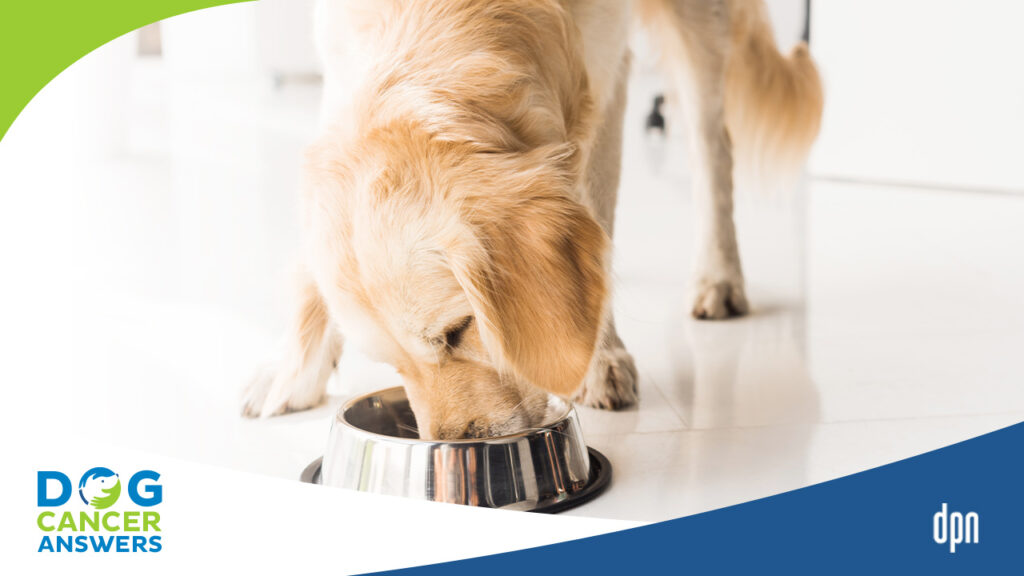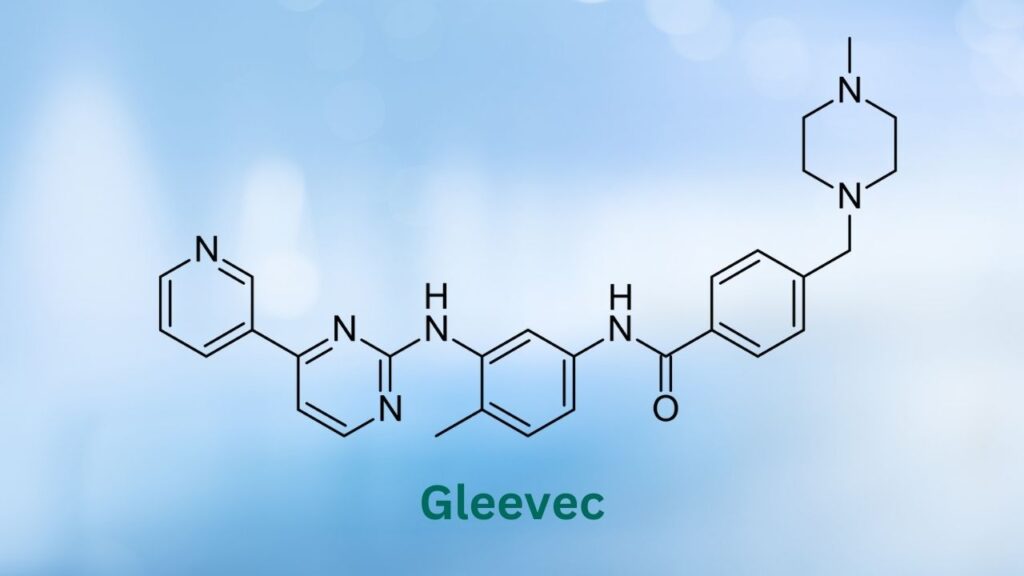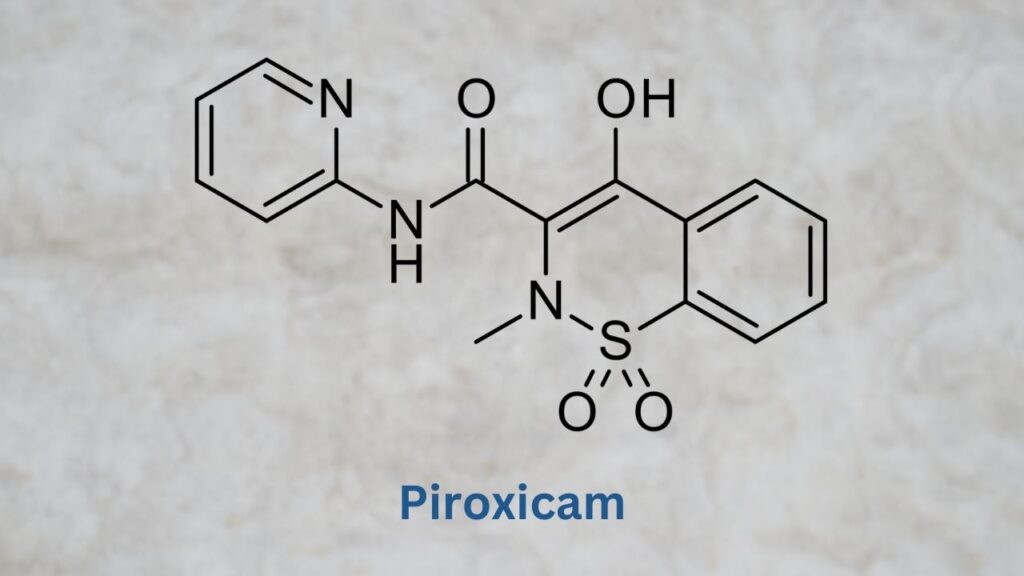Prednisone is a type of glucocorticoid that is used to treat many different medical conditions in dogs from skin disease to cancer. This medication is particularly effective at reducing inflammation which can help reduce discomfort and drastically improve the quality of life for many dogs. Prednisone and its active form, prednisolone, can reduce tumor size, relieve inflammation-based pain, and increase appetite while reducing nausea.
Key Takeaways
- How long a dog should be on prednisone depends on the condition being treated. Whenever possible, it should be tapered after a short course of therapy.
- Prednisone is a pain reliever for dogs because it decreases inflammation, but other pain relievers have fewer side effects.
- If your veterinarian recommends prednisone, they think it will help. It’s a potent steroid that quickly reduces inflammation, can reduce tumor size, and increase appetite.
- How much prednisone you can give a dog depends widely on the size of the dog and the condition being treated. Veterinarians think about doses very carefully for this reason. Don’t change doses without your veterinarian’s advice, because very bad side effects can occur.
- Prednisone can make a dog feel better quickly!
- Some prednisone side effects are temporary and reversible once your dog is off prednisone.
- Other side effects come with long-term use and may be irreversible, or take weeks to months to resolve.
Prednisone: a Useful Synthetic Steroid
Prednisone is a synthetic glucocorticoid that mimics the action of cortisol within the body. Veterinarians recommend prednisone for dogs for many conditions and diseases, including some cancers. It is a potent medication with significant side effects but is also extremely helpful when needed.
Prednisone Mimics Cortisol
The adrenal glands make cortisol, a glucocorticoid, or hormone, which is responsible for a wide range of functions, including:1
- reducing inflammation
- facilitating the stress response
- controlling fat, carbohydrate, and protein metabolism
Because cortisol facilitates so many processes, veterinarians prescribe prednisone for a wide range of conditions. Sometimes, they prescribe the active form of prednisone, prednisolone, instead.
Prednisone or Prednisolone?
A dog’s body converts prednisone to prednisolone in the liver before using it. Some veterinarians prefer prednisolone for their patients, especially those with liver disease, as it does not need to be altered to be effective.2
This article will discuss prednisone, but in many cases, it can be considered interchangeable with prednisolone, despite being two separate medications.2
Many Forms of Prednisone/Prednisolone
Prednisone is an effective medication for many medical conditions and is available in multiple formulations. Prednisone is most often used orally in pill form, but it can also be found in liquid form, creams, ointments, and drops that may be used for the skin, ears, or eyes.
As stated above, prednisone has many different effects on the body. However, it is most often used to reduce inflammation. Reducing inflammation in general can provide relief for multiple conditions.3
Brand Names
Prednisone and prednisolone can be found under multiple brand names and in generic and compounded forms. Common brand names for prednisone/prednisolone products include:4
- Deltasone® (prednisone)
- Rayos® (prednisone)
- Pediapred® (prednisolone)
- Prednis-Tab® (prednisolone)
In its oral form, prednisone is commonly available as a white pill that comes in 1mg, 2.5mg, 5mg, 10mg, and 20mg tablets. Prednisone is known for being a relatively inexpensive drug.5
How Prednisone Works
Since prednisone mimics the body’s cortisol structure, it can easily enter cells after it is activated into prednisolone by the liver. It binds to receptors for glucocorticoids located in different cell types throughout the body.6
The presence of glucocorticoid receptors around the body means that prednisone can be effective for a wide range of medical conditions, but it is also the reason that side effects of prednisone are common and can be severe (see below).6
Prednisone can have many different effects on the body, depending on both dosage and location of absorption.
Prednisone is most effective at reducing inflammation and affecting the immune system by inhibiting many different functions of white blood cells. It inhibits the ability of white blood cells to grow, develop, move, and respond to inflammation triggers such as infection or over-stimulation (like in immune-mediated diseases).6
It may mimic the natural hormone cortisol, but prednisone and its active form, prednisolone, are stronger anti-inflammatories. The anti-inflammatory action of prednisone is around four times stronger than natural cortisol.3
Strong side effects often accompany the strong action of prednisone, and those side effects can develop rather quickly. Your veterinarian may warn you about the following:
- Prednisone inhibits the release of anti-diuretic hormone from the kidneys, reducing the ability of the body to concentrate urine. This causes the side effect of increased urination and thirst that we often see with prednisone.6
- Prednisone also reduces the production of the protective barrier of mucus in the stomach. This effect can result in gastrointestinal bleeding and ulcers, especially when prednisone is used in high doses.6
This is why veterinarians use prednisone only when needed, and dose it carefully. Widely available, inexpensive, and easy to give, it’s also potent. It’s common for side effects to develop, and your veterinarian will want you to monitor them and either use extra support to manage them or change the dose, depending on your dog’s situation. (More on dosing below.)
Prednisone is used for many conditions because it has a wide range of effects on the body. Let’s review some of those uses now. We’ll go over non-cancer uses first and then talk about cancer specifically. If your dog has more than one of these problems, plus cancer, your veterinarian might suggest using prednisone or prednisolone as a “kill two birds with one stone” treatment.
Common Uses of Prednisone for Dogs
Here are some common uses for prednisone in dogs.
Allergies and Allergic Skin Diseases
One of the most common uses for prednisone is to reduce an allergic response. Allergic conditions in dogs can occur for a number of different reasons, such as reactions to flea bites or allergens in the food or air, and can result in red, itchy skin.7
Prednisone can effectively calm the body’s overactive allergic response, making your dog feel much more comfortable. It can also help control sudden allergic reactions following bee stings that can result in muzzle swelling or difficulty breathing.6
Ear Infections
Ear infections are often caused by bacteria or yeast, but dogs can also be predisposed to developing ear infections if they have underlying allergies. Ear canals can get red, swollen, and itchy when infected.
Prednisone can effectively calm that inflammation so your dog can feel more comfortable without the constant urge to scratch and shake their head.6,7
Airway Diseases
Prednisone can effectively reduce the severity of certain causes of coughing in dogs, such as inflammation caused by breathing with a collapsing trachea.
Additionally, prednisone can effectively reduce the severity of coughing caused by inflammation in dogs with chronic bronchitis.8
Arthritis Pain Management
In some conditions, such as osteoarthritis, joint inflammation can result in pain and a reluctance to move around normally. Prednisone is not able to reduce pain directly but can potently reduce joint inflammation, which can allow your dog to feel much more comfortable.9
Prednisone may also be used to manage immune-mediated arthritis.
It is not used as frequently in dogs with osteoarthritis as it used to be due to the potentially harmful side effects of chronic (long-term) glucocorticoid usage.
Non-steroidal anti-inflammatory drugs (NSAIDs) like carprofen are usually prescribed first. However, prednisone may still be added to a treatment regimen along with physical therapy and joint supplements, especially in severe cases.10
Dr. Demian Dressler dives deep into his thinking about pain management, including how he uses prednisone, in this special episode of DOG CANCER ANSWERS.
Immune-Mediated Disease
Just like people, dogs can be affected by a number of different conditions caused by an overactive immune system that attacks the body’s cells and tissues.
Examples of autoimmune diseases in dogs include skin conditions like pemphigus and lupus, as well as potentially life-threatening diseases like immune-mediated thrombocytopenia (IMTP), where the body attacks its own platelets and immune-mediated hemolytic anemia (IMHA), where the body attacks its own red blood cells. For IMTP and IMHA, prednisone is often the first-line therapy as it is very effective at suppressing the immune system at high doses.6
Once the condition has been stabilized after suppressing the immune system, the amount of prednisone will be tapered down to find the lowest effective dose, or additional immunosuppressing medications may be used if longer-term treatment is needed.6
Inflammatory Bowel Disease
Inflammatory bowel disease (IBD) is the most common cause of chronic vomiting and diarrhea in dogs and is caused by excessive amounts of inflammatory cells in the gut. This condition is considered immune-mediated and can be caused by a few things, such as an exaggerated immune response to diet, an abnormal population of gut bacteria, and stress.6,11
Prednisone can be very effective at improving the clinical symptoms of IBD. However, it is typically only used if antibiotics or a diet trial have been ineffective due to the potential for side effects, especially in chronic conditions.11
Addison’s Disease
Hypoadrenocorticism, or Addison’s disease, is a condition where the adrenal glands do not produce enough of two types of hormones – glucocorticoids and mineralocorticoids that regulate the electrolytes in the blood.
Since this condition is caused by the inability of the adrenal gland to produce glucocorticoids, prednisone can be used at a low dose to mimic the normal amount of cortisol present in the body. (Another medication is used to mimic the effect of mineralocorticoids.)
With proper management and regular rechecks, dogs with Addison’s disease can be treated successfully for many years.12
Topical Uses
Prednisone is most commonly used as an oral, systemic medication, but applying it topically on the skin can provide relief of symptoms like redness and itchiness while reducing the incidence of side effects.
Topical prednisone is very effective at managing inflammation localized to the skin in conditions such as flea allergy dermatitis, food allergy, and atopic dermatitis.
Additionally, prednisone can be used in topical medications for ear infections and may greatly reduce the risk of side effects compared to oral use.7
Prednisone/Prednisolone and Cancers in Dogs
Prednisone can provide benefits for patients with several different forms of cancer.
It can help reduce inflammation, and it can also assist in reducing cancer progression when used with other chemotherapeutic agents. In general, it can help improve the quality of life for dogs with cancer. Additionally, veterinarians use prednisone to improve appetite and hopefully reduce the severity of nausea and vomiting.6,13
Prednisone is not always recommended in every cancer case and is not interchangeable with other more potent chemotherapy drugs. But when it is used to treat cancer, prednisone has several benefits as a chemotherapy agent:
- Unlike other forms of chemotherapy, prednisone tablets can be handled safely and will not result in toxic residues in your dog’s urine or feces.
- Prednisone can produce side effects (see below). However, they are often mild and manageable.
- Prednisone is very inexpensive and easy to get.
Prednisone is a go-to drug for several specific types of cancer.
Prednisone and Lymphoma
Lymphoma is a form of cancer commonly seen in dogs that affects the lymphocytes – an immune system cell responsible for finding and killing infectious microorganisms.
Prednisone can provide multiple benefits to dogs with lymphoma, including:14,15
- shrinking the tumors directly
- reducing lymph node swelling
- reducing generalized inflammation
- improving the quality of life
The life expectancy for dogs with lymphoma treated with prednisone alone is 1-2 months. That may not be significantly longer than the life expectancy without treatment.16 Compared to the life expectancy in dogs treated with a multi-drug protocol which can extend lifespan from several months to several years,14 that might not seem like a lot of time. So why use it?
Because prednisone quickly helps relieve the symptoms of lymphoma, which makes dogs feel very sick. If you are not using CHOP or another multi-drug protocol, using prednisone alone helps to address the lymphoma while also increasing quality of life.
Even though prednisone can be used as a single-agent therapy, it is most effective with chemotherapeutic agents such as vincristine, cyclophosphamide, or doxorubicin.17 For that reason, it is a common part of the multi-drug protocols used to treat lymphoma in dogs.
Many general practice veterinarians will offer prednisone quickly to relieve symptoms. However, if prednisone is given alone, it can cause resistance to other chemotherapy medications, making them less effective when you start them later. Therefore, if you want to use multi-drug chemo protocols, it is important to discuss your dog’s treatment plan with your veterinarian before starting them on prednisone.14,17
Prednisone and Mast Cell Tumors
Mast cell tumors are a common form of cancer in dogs. Mast cells are inflammatory cells in the blood that normally help the body manage and fight allergens and parasites.
Surgical removal is the treatment of choice for this form of cancer, but there can be a significant benefit to administering prednisone before surgery. Prednisone can reduce edema (swelling) around tumors, making surgical removal more effective.
In fact, in one study, prednisone reduced the tumor size by 25% in over 80% of dogs with mast cell tumors. That is a significant response in tumor size to prednisone, but the effect only lasted a few weeks. That’s why prednisone is not viable as long-term chemotherapy, but is most effective when preparing for surgical removal.18
Prednisone and Neurologic Tumors
Compared to other forms of cancer, cancers of the nervous system, specifically in the brain and spinal cord, can be particularly dangerous due to the space limitations of the skull. A growing tumor can cause increased pressure on the brain and spinal cord, resulting in symptoms such as altered mobility, pain, seizures, and behavioral changes like compulsive circling.19
Prednisone does not treat these tumors directly, but it can be incredibly effective at reducing the swelling associated with these types of tumors, and clinical signs can improve dramatically after administration. However, sadly, the improvement is not permanent as swelling returns and/or tumor growth occurs.20
Decreasing Elevated Calcium Levels
One of the side effects of cancer is a dangerously high blood calcium level. This effect can be seen particularly in lymphoma and anal sac tumors. It can result in reduced appetite, vomiting, excessive thirst, urination, muscle weakness, and twitching. Eventually, renal failure (kidney failure) can occur, which can be fatal.21
Prednisone is incredibly effective and can rapidly reduce the blood calcium level. It is important, though, to make sure your dog has a diagnosis for the cause of his increased calcium level before using prednisone, as it can interfere with the ability to use other chemotherapy agents that can improve your dog’s chances at survival.21,22
When to Not Use Prednisone for Dogs
While prednisone can be helpful for a wide variety of conditions, there are some situations when it should be used cautiously or may even cause harm.
Wounds and Infections
Due to prednisone’s immunosuppressive effects, it should not be used in dogs that have a wound or severe infection because it will prevent healing and reduce the ability of the body to fight off and clear the infection.
Diabetes
Prednisone should be used with extreme caution in dogs with diabetes as it often increases blood glucose levels, increases insulin resistance, and can worsen glycemic control. This does not mean that prednisone can never be used in dogs with diabetes, but they will need to be closely monitored and may need an increased insulin dose while taking prednisone.6
Liver and Kidney Disease
Prednisone is metabolized and excreted from the body by the liver and kidneys. As a result, dogs with liver and kidney disease should be prescribed prednisolone to reduce side effects and should be monitored closely.3,15
During Pregnancy or in Puppies
Prednisone should not be administered to pregnant dogs due to the potential to induce early labor or cause abortion. Additionally, prednisone should be avoided in growing puppies because it suppresses the release of growth hormones and can result in stunted growth.2,4
Heart Disease
Prednisone should be used sparingly in dogs with high blood pressure, heart disease, and especially congestive heart failure because it has the effect of increasing blood volume and pressure by increasing salt retention in the blood.4,23
Bleeding Conditions
Prednisone can be very irritating to the stomach and gastrointestinal tract, especially at higher doses. Bleeding and ulceration of gastrointestinal tissues can occur at these higher doses and can be exceptionally dangerous to dogs with a clotting disorder or those taking blood thinners.2
Allergy Testing
Prednisone should not be used in dogs who may be undergoing allergy testing within the month as it can interfere with the results.3
Vaccines
The response to vaccines may be reduced if your dog is taking prednisone at the same time.4
Drug Interactions
Because glucocorticoid receptors are located throughout the body, many different medications should be used with caution at the same time as prednisone or not at all because of the risk of harmful drug interactions.
Examples of these medications include:4
- Aspirin
- Phenobarbital
- Cyclosporine
- Rifampin
- Erythromycin
- Mitotane
- Amphotericin B
- Digoxin
- Estrogens
- Ketoconazole
- Diuretics like furosemide
- Nonsteroidal anti-inflammatory drugs
Non-Steroidal Anti-Inflammatory Drugs
The risk of stomach ulcers increases significantly when prednisone is used at the same time as non-steroidal anti-inflammatory drugs (NSAIDs).3
Immune Supplements
Due to prednisone’s effects on the immune system, supplements that have immunomodulating effects may be harmful or alter prednisone’s effects and should be used only after consulting with your veterinarian. Examples of these supplements include:24,25
- medicinal fungi
- echinacea
- astragalus
- ginseng
- thunder god vine
- licorice root
A listener wonders how long her dog can be on prednisone. Dr. Demian Dressler answers her in this episode of DOG CANCER ANSWERS.
How to Give Prednisone to Dogs
As with all medications and supplements, you should only administer prednisone or prednisolone as your veterinarian prescribes and follow their recommendations exactly (specifically the tapering process) to reduce the risk of adverse effects and adrenal crash (see below).
Prednisone is typically given at home in oral pill form or as a topical ointment. It can also be given as an injection at the clinic.
When given orally, prednisone should be given with food to reduce the risk of stomach irritation.3 The onset of action for prednisone is rapid, so you may see improvement or possible side effects 1-2 hours after administration.4
Prednisone is often given twice a day, but when it is prescribed once per day, it should be given in the morning.6
Dosing Schedules
There is no one-size-fits-all prednisone or prednisolone dose. The dosage varies widely depending on what health problem your dog is being treated for.
For many illnesses, the vet will start with a high dose for a few days, gradually decreasing over a few weeks. For more long-term use, your vet will try to find the lowest dose to give continually that still helps your dog feel better. Sometimes the drug will be given every day, and sometimes it may be given on alternate days.
It is not uncommon to start at one dose, see how your dog does, and then increase or decrease it (slowly and only under veterinary supervision) to minimize side effects while still getting the benefits of prednisone. Do not be afraid to keep your veterinarian informed about how your dog is doing on prednisone.
Never Stop Prednisone Suddenly!
Giving prednisone can suppress the ability of the adrenal glands to produce internal glucocorticoids. Glucocorticoids are essential for daily living, and stopping prednisone suddenly can cause a life-threatening crisis called an Addisonian crisis. This is why prednisone should never be stopped suddenly.
Prednisone should always be tapered to allow the adrenal glands to adjust to cortisol production independently.3 Your veterinarian will know how and when to taper down its use slowly so that your dog’s adrenal glands have time to start producing cortisol again.
Some mild side effects, such as increased thirst and urination, and panting, are common with prednisone usage (see more below), but if you see any side effects that concern you, you should contact your vet right away. Do not skip or postpone doses without consulting your veterinarian first.3
What If I Miss a Dose?
You should give this medication to your pet exactly as your veterinarian prescribes, but if you accidentally miss a dose, you should give it as soon as you remember.
If it is close to the next dose, you should skip the missed dose and continue the normal dose. Never give two doses at once or extra doses unless you are told to do so by your veterinarian.3,4
Storage and Handling
Prednisone and prednisolone tablets should be kept at room temperature, ideally between 59°F and 86°F, not exceeding 104°F. Store this medication in a tight container and protect it from light. Follow the label instructions for recommended storage for liquid formulations.4
Prednisone is considered a form of chemotherapy due to its effectiveness in some forms of cancer, but it does not require extreme measures when handling or dealing with your dog’s urine or feces.
Prednisone is generally safe to handle, and you don’t need to wear gloves. However, we recommend washing your hands after administering it. If your pet receives prednisone or other glucocorticoids in an ointment form, use gloves when applying them to avoid absorption into your skin.3
Dogs get the munchies on prednisone! Dr. Demian Dressler helps a listener figure out how to feed her dog's newly ravenous appetite on this episode of DOG CANCER ANSWERS.
Prednisone for Dogs Side Effects
Due to the presence of glucocorticoid receptors throughout the body, there are a number of different side effects that can result from prednisone usage.
When used on a short-term basis (a month or less), side effects are generally mild and can include:3
- increased urination and thirst (PU/PD)
- upset stomach
- increased appetite
- decreased energy
- excessive panting
- behavior changes (nervousness, restlessness, aggression, depression, or barking)
Sometimes prednisone may need to be given for longer than a month. In these situations, especially at high doses, side effects can become more serious and longer lasting.
Side effects that may occur with long-term administration include:1
- weight gain
- muscle loss
- delayed wound healing
- stomach ulcers
- hair loss
- skin problems or infections with yeast, bacteria, or mange
- increased liver enzymes
- diabetes mellitus
- decreased production of thyroid hormone
Urinary tract infections can occur in around 20% of long-term prednisone patients, so your veterinarian may want to periodically check your dog’s urine for evidence of a possible infection.26
Managing Side Effects
Despite the long list of side effects that can be observed with prednisone usage, some guidelines can help make sure it is being used as safely as possible for your dog:
- Prednisone should be used at the lowest effective dose. Once your dog’s condition has been stabilized after the initial course of treatment, your veterinarian should begin the gradual tapering process to reduce the risk of side effects.
- Some life-threatening conditions like immune-mediated hemolytic anemia may require long-term daily prednisone usage. In contrast, other milder conditions may only require a short course or medication every other day to manage symptoms.
- There are other immunosuppressive medications, such as azathioprine and cyclosporine, which can help reduce your dog’s exposure to long-term high-dose glucocorticoids and therefore reduce the likelihood and severity of side effects.27
- If your dog requires prednisone on a chronic basis, your veterinarian may perform periodic bloodwork 2-4 times a year to check your pet’s liver and kidney health and blood glucose levels.
- Urinalysis to check for a urinary tract infection may also be routine.
- It is also important to periodically weigh your pet to avoid unhealthy excessive weight gain.
- It is important to remember that prednisone alone is often insufficient to adequately treat your dog’s cancer, so you should discuss a treatment protocol with your veterinarian that may help improve your dog’s chances of a longer life.15
- Corticosteroids in Animals – Pharmacology. Merck Veterinary Manual. Accessed January 22, 2023. https://www.merckvetmanual.com/pharmacology/inflammation/corticosteroids-in-animals
- Wendy Brooks DVM DABVP DVM. Prednisolone/Prednisone. VIN.com. Published online August 8, 2017. https://www.vin.com/doc/?id=8156779
- Prednisolone and Prednisone for dogs and cats: Uses, Dosage & Side Effects. Accessed January 18, 2023. https://www.wedgewoodpharmacy.com/medications/prednisolone-and-prednisone/
- Prednisone and Prednisolone (Prelone®, Pediapred®, Deltasone®, Orapred®). Accessed June 14, 2023. https://www.nationwidechildrens.org/family-resources-education/health-wellness-and-safety-resources/helping-hands/prednisone-and-prednisolone
- PredniSONE Tablets, USP1 mg, 2.5 mg, 5 mg, 10 mg and 20 mg. Accessed January 21, 2023. https://dailymed.nlm.nih.gov/dailymed/fda/fdaDrugXsl.cfm?setid=10fe5a3b-84dc-4600-87c2-b80c97ce18cf&type=display
- Reusch CE. Glucocorticoid therapy. In: Reusch CE, Feldman EC, Nelson RW, Scott Moncrieff JCR, Behrend EN, eds. Reusch, Claudia E (2015). Glucocorticoid Therapy. In: Feldman, Edward C; Nelson, Richard W; Reusch, Claudia E; Scott Moncrieff, J Catharine R; Behrend, E N. Canine & Feline Endocrinology. St. Louis, Missouri, U.S.: Elsevier, 555-577. Elsevier; 2015:555-577. doi:10.1016/B978-1-4557-4456-5.00014-6
- The proper use of topical and oral corticosteroids. DVM 360. Accessed January 21, 2023. https://www.dvm360.com/view/proper-use-topical-and-oral-corticosteroids
- Canine Chronic Bronchitis: A Review and Update. Today’s Veterinary Practice. Published November 1, 2012. Accessed January 22, 2023. https://todaysveterinarypractice.com/respiratory-medicine/canine-chronic-bronchitis-a-review-update/
- Beale BS. Orthopedic Problems in Geriatric Dogs and Cats. Vet Clin North Am Small Anim Pract. 2005;35(3):655-674. doi:10.1016/j.cvsm.2005.01.001
- Medications for Degenerative Arthritis in Dogs and Cats. Accessed June 13, 2023. https://veterinarypartner.vin.com/default.aspx?pid=19239&catId=102894&id=4951467&ind=1772&objTypeID=1007
- Garcia ED. Inflammatory Bowel Disease in Dogs and Cats. Today’s Veterinary Practice. Published January 16, 2018. Accessed January 22, 2023. https://todaysveterinarypractice.com/gastroenterology/inflammatory-bowel-disease-dogs-cats/
- agraham. Canine Hypoadrenocorticism: Overview, Diagnosis, & Treatment. Today’s Veterinary Practice. Published September 1, 2014. Accessed January 22, 2023. https://todaysveterinarypractice.com/endocrinology/canine-hypoadrenocorticism-overview-diagnosis-treatment/
- Gustafson DL, Page RL. Cancer Chemotherapy. In: Withrow and MacEwen’s Small Animal Clinical Oncology. Elsevier; 2013:157-179. doi:10.1016/B978-1-4377-2362-5.00011-6
- Rassnick KM, Bailey DB, Kamstock DA, et al. Survival time for dogs with previously untreated, peripheral nodal, intermediate- or large-cell lymphoma treated with prednisone alone: the Canine Lymphoma Steroid Only trial. J Am Vet Med Assoc. 2021;259(1):62-71. doi:10.2460/javma.259.1.62
- Chun R. Cancer Chemotherapy. In: Withrow & MacEwen’s Small Animal Clinical Oncology. Elsevier; 2007:163-192. doi:10.1016/B978-072160558-6.50014-9
- Valli VE, Kass PH, Myint MS, Scott F. Canine Lymphomas: Association of Classification Type, Disease Stage, Tumor Subtype, Mitotic Rate, and Treatment With Survival. Vet Pathol. 2013;50(5):738-748. doi:10.1177/0300985813478210
- Gear R. Practical update on canine lymphoma: 2. Treatment. In Pract. 2009;31(9):454-458. doi:10.1136/inpract.31.9.454
- Stanclift RM, Gilson SD. Evaluation of neoadjuvant prednisone administration and surgical excision in treatment of cutaneous mast cell tumors in dogs. J Am Vet Med Assoc. 2008;232(1):53-62. doi:10.2460/javma.232.1.53
- Neoplasia of the Nervous System in Animals – Nervous System. Merck Veterinary Manual. Accessed January 24, 2023. https://www.merckvetmanual.com/nervous-system/neoplasia-of-the-nervous-system/neoplasia-of-the-nervous-system-in-animals
- Jeffery ND. Corticosteroid Use in Small Animal Neurology. Vet Clin North Am Small Anim Pract. 2014;44(6):1059-1074. doi:10.1016/j.cvsm.2014.07.004
- Bailey DB. Paraneoplastic Syndromes. In: Withrow and MacEwen’s Small Animal Clinical Oncology. Elsevier; 2019:98-112. doi:10.1016/B978-0-323-59496-7.00005-0
- Ostrowski T, Millard H. Oncology myths, part 2. dvm360. Published online April 17, 2023:32-32.
- Sturgess K. Rational use of corticosteroids in small animals. In Pract. 2002;24(7):368-375. doi:10.1136/inpract.24.7.368
- Wynn SG, Fougère BJ. Veterinary Herbal Medicine: A Systems-Based Approach. In: Veterinary Herbal Medicine. Elsevier; 2007:291-409. doi:10.1016/B978-0-323-02998-8.50024-X
- Introduction to the Clinical Use of Dietary Supplements in Dogs and Cats – WWVC 2015 – VIN. Accessed January 24, 2023. https://www.vin.com/members/cms/project/defaultadv1.aspx?pid=15459&catId=&id=7432427&said=&meta=&authorid=&preview=
- Torres SMF, Diaz SF, Nogueira SA, et al. Frequency of urinary tract infection among dogs with pruritic disorders receiving long-term glucocorticoid treatment. J Am Vet Med Assoc. 2005;227(2):239-243. doi:10.2460/javma.2005.227.239
- Viviano KR. Update on Immununosuppressive Therapies for Dogs and Cats. Vet Clin North Am Small Anim Pract. 2013;43(5):1149-1170. doi:10.1016/j.cvsm.2013.04.009
Deltasone® (prednisone) is a registered trademark of Space Age Holdings LLC.
Rayos® (prednisone) is a registered trademark of Horizon Pharma USA, INC.
Pediapred® (prednisolone) is a registered trademark of Fisons Corporation
Prednis-Tab® (prednisolone) is a registered trademark of Lloyd Inc.
Topics
Did You Find This Helpful? Share It with Your Pack!
Use the buttons to share what you learned on social media, download a PDF, print this out, or email it to your veterinarian.








